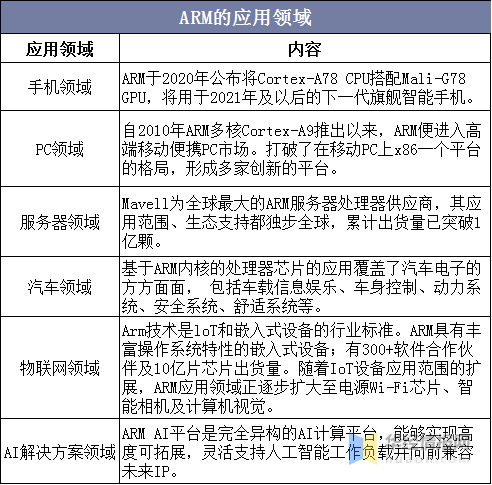



ARM’s design is the foundation of most mobile device processors worldwide. Major mobile chips, including Qualcomm Snapdragon, Apple A series, Huawei Kirin chips, and Samsung Exynos, are all built on ARM technology.
Today, let’s follow the steps of Kewa to learn more about ARM!
1. What is ARM?
ARM first refers to a company (the abbreviation for Advanced RISC Machines), a global leader in semiconductor intellectual property (IP) provision. ARM designs a large number of high-performance, energy-efficient RISC processors, related technologies, and software.
Secondly, ARM also refers to a technology characterized by high performance, low cost, and energy efficiency. It holds a dominant position in the fields of smartphones, tablets, embedded control, and multimedia digital processors.
Additionally, ARM is a generic term for a class of microprocessors, each series having its own characteristics and application fields.

2. Features of ARM
Small size, low power consumption, low cost, high performance;
Supports TRUMB (16-bit) / AMR (32-bit instruction set), allowing better compatibility with 8-bit, 16-bit, and 32-bit devices;
Utilizes a large number of registers, enabling fast instruction execution;
Most data processing is completed directly in registers;
Simple addressing modes, high execution efficiency;
Fixed instruction length.
3. Application Fields of ARM Microprocessors
ARM processors have the highest market coverage and broad development trends. The market share of 32-bit microprocessors based on ARM technology has currently reached 80%.
Industrial Control Field: As a 32-bit RISC architecture, microcontroller chips based on ARM cores not only dominate the high-end microcontroller market but are also gradually expanding into low-end microcontroller applications. The low power consumption and high cost-performance of ARM microcontrollers pose a challenge to traditional 8-bit/16-bit microcontrollers.
Wireless Communication Field: Currently, over 85% of wireless communication devices use ARM technology. ARM’s high performance and low cost are increasingly consolidating its position in this field.
Network Equipment: With the promotion of broadband technology, ARM-based ADSL chips are gradually gaining competitive advantages. Moreover, ARM has optimized voice and video processing and has gained widespread support, challenging the application fields of DSP.
Consumer Electronics: ARM technology is widely adopted in popular digital audio players, digital set-top boxes, and gaming consoles.
Imaging and Security Products: Most of the popular digital cameras and printers currently use ARM technology. The 32-bit SIM smart cards in mobile phones also utilize ARM technology.

Source: Organized by Huajing Industry Research Institute
4. Advantages of ARM
1. Leading chip architecture design technology, with products performing excellently in terms of performance and power consumption, essentially dominating 90% of the global smartphone market;
2. A broad customer base; whether it’s Apple, Samsung, or Huawei, Qualcomm, all have used ARM architecture chips;
3. An open ecosystem, collaborating with various chip manufacturers, software developers, system integrators, etc.;
4. ARM’s chip architecture has a high degree of customizability, allowing customers to adjust according to their needs.

Author: Cao Tianhao (Heilongjiang University)
References:
[1] Qian Tongxin. AI Boom Impacts Chip Industry, GPU Soars, CPU Absent [N]. First Financial Daily, 2023-06-01(A09). DOI:10.28207/n.cnki.ndycj.2023.002335.
[2] Zhang Han. Analysis of the Impact of the EU and US Chip Act on the Automotive Chip Industry Supply Chain [J]. Liaoning Economy, 2023(02):39-41. DOI:10.14041/j.cnki.1003-4617.2023.02.017.
[3] Questioning Anti-Corruption in China’s Chip Industry, Is It Deliberately Murky? [N]. Global Times, 2022-08-01(014). DOI:10.28378/n.cnki.nhqsb.2022.006585.
[4] Bu Hangyu. Research on Earnings Management of Chip Companies [D]. Central South University of Economics and Law, 2022. DOI:10.27660/d.cnki.gzczu.2022.001442.
[5] Wu Siqi. Research on Value Assessment of Chip Design Enterprises in a VUCA Environment [D]. Lanzhou University of Finance and Economics, 2022. DOI:10.27732/d.cnki.gnzsx.2022.000102.
